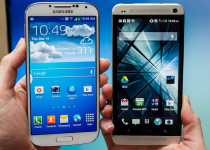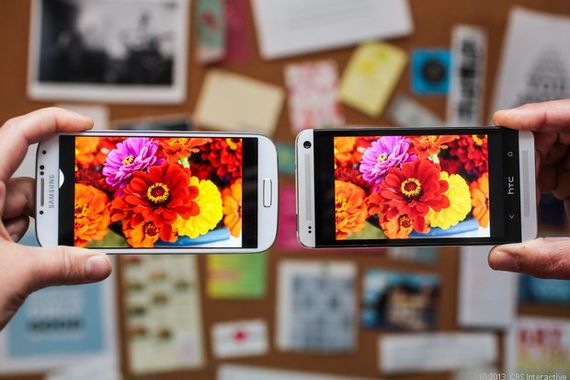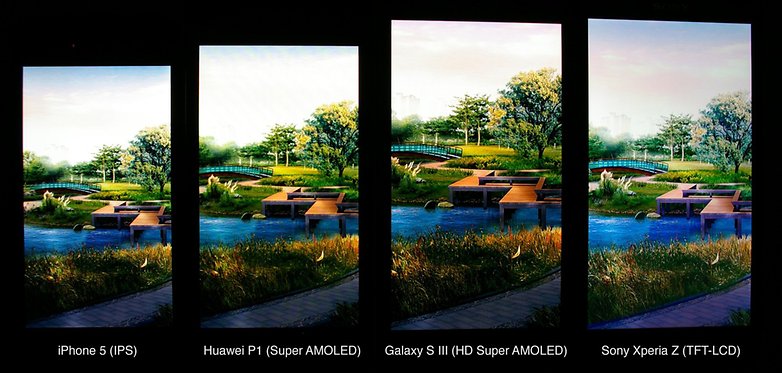
Which screen is better for the smartphone: IPS or AMOLED? Comparison of IPS and Super AMOLED screens: What is the difference, differences
Today, when making screens for mobile phones, two types of matrices are used: AMOLED and IPS. In this article, we will tell you what the difference between the screens built on these types of the matrix and indicate their difference.
Navigation
The main advantages of IPS technology
First display displays IPS. appeared in 1996. But, these were more experimental devices. Mass release of such screens began only a few years ago. During the first screens on such a matrix to modern displays, all the shortcomings and bugs are corrected. Today you can state the fact that IPS screens are firmly entered into our lives.
The main advantages of IPS matrices over competitive technologies are:
- Best color reproduction. Unlike Amoled. Screens of U. IPS. Colors are not "enhanced" artificially. Thanks to such an honest color reproduction, IPS-displays loved everyone who works with photos. Photographers, photo edits and representatives of related professions. IPS screen Gives a bright and rich picture, if it is such. If the picture is dim, then on the screen built on the matrix IPS. She will be dull. Because of what everyone does not appreciate this advantage positively.
Important: on Amoled. Screens can also transmit "honest" colors. But it is achieved at the expense of software settings, which in advance the inquired pictures give a more believable look.
- Real White. Amoled. Screens simply cannot display white color correctly. IPS. Screens, on the contrary, give a real white color. No blue or yellowness like competing technology. Clean white color affects the entire image as a whole. Therefore, the imposition of the shade on it can distort the entire picture.
- No distortion of colors when viewing the screen at an angle. Someone may lower this advantage IPS. But, imagine that you are in the company of friends. See some interesting video from your smartphone. One will always be the one who the screen of your smartphone will not be fully deployed. And if your screen is not IPS, it will immediately be seen when it is arranged at an angle. This effect has long felt the owners Sony Xperia Z..
Important: When expanding the amoled screen, the color reproduction screen shifts into a cold spectrum or the picture will begin to "blush" or "green."
Large maximum brightness. This advantage is particularly expressed in using the smartphone screen on the bright sun. If it is built on your amoled matrix, then the bright rays of the scorching sun will make you look for a shadow to see what is happening on the screen. The thing is that IPS.-matza uses the LCD screen with its powerful backlight. W. Amoled. Screens highlights each pixel. What "physically" does not allow the screen to be bright.

Amoles vs IPS.
- Detailing and sharpness. Among us there are such people, the structure of the eye of which allows you to see pixelization, even at the best Full HD. screen. These people definitely do not need to buy a smartphone with a screen Amoled.. Otherwise, its use will lead to great disappointment. Modern screens Amoled. Gradually "cure" this childhood disease. But, it is still present on most budget apparatus.
- Burning LEDs. W. Amoled. Organic LEDs can burn out the screens. What is reflected in different brightness of individual parts of the screen. According to the developers of such screens, the service life of the LED is 6-10 years. But, in practice, they can burn faster. W. IPS. There is no such problem.
Cheaper Production Technology. Banal, but important advantage IPS.. The cost of the smartphone is made up of various modules and components. The screen is an important and expensive part of the smartphone. The cheaper screen, the cheaper the smartphone will be.
Pros of AMOLED technology
- High contrast. When compared IPS. from Amoled. The second screen will seem more colorful and saturated. Organic LEDs make it possible to make a picture as a contrast. What causes the effect of "embellishment" in the color rendering.
Important: Special tests show that the level of contrast Amoled. Screens achieve relationships 30000:1. Whereas U. IPS. This indicator is equal 1500:1. The difference is essential.
- Absolute black. If one of the advantages IPS. There was a "real" white, then Amoled. The screen allows you to display absolute black color. This is achieved due to the fact that Amoled. Screens are highlighted separate pixels. Whereas U. IPS. The backlight occurs the entire screen. What negatively affects black.
- Little energy price. Everything is simple here. Separately highlighted pixels spend less charge than the backlight of the entire screen, like IPS.. "On paper" this advantage seems very important, and for many turns. But, in practice, this is not quite so. Many other factors have an impact on the resource consumption of your gadget. From the style of using the device, to the energy saving technologies used by the developer.
- Less response time. Amoled. The matrix allows you to make screens with a smaller response time compared to IPS screens. Which allows the picture to change faster. But, this advantage in the speed of changing the picture is so insignificant that in fact it is simply not visible.
- Little thickness. IN Amoled. Screens do not need backlight. Due to what the place is saved. It is due to this advantage today there are ultra-thin smartphones on the market. If this indicator is important for you, cholect the smartphones with the screen Amoled..
Which screen is better for the smartphone: IPS or Amoled choose?
If we summarize, it can be noted that both popular screens technology for smartphones have both their advantages and cons. Of course, it may seem that IPS. More list of advantages, which means this technology is better. And in some cases it is.

Display selection
But, much more importantly, how the manufacturer implements these advantages in practice. In most cases, this cannot be done. Although now appeared IPS. Screens that actually exceed even a more advanced matrix Super Amoled..
High-quality screens IPS.Satchase boasts ASUS ZENFONE 3 MAX, LG G5 SE, Apple iPhone 5S. And some other models. But, is it worth discling Samsung smartphones with their advanced screens Super Amoled.?
